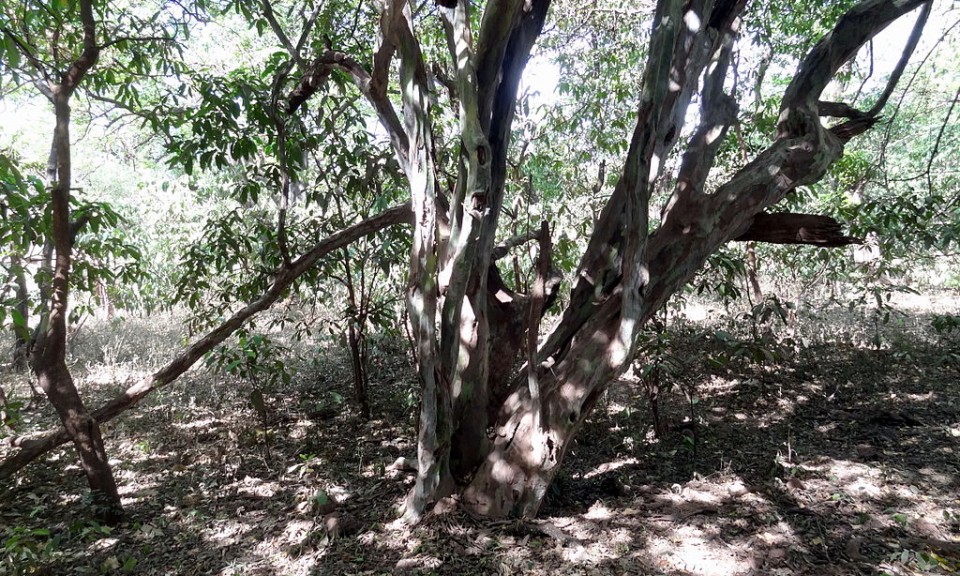Why Chinese attempts to reignite rosewood market will fail
Source:atimes
Chinese entrepreneurs are once more expanding their search for rosewood.

Chinese entrepreneurs are once more expanding their search for rosewood. But the previous boom in demand was driven largely by market manipulation and it's unlikely consumers will fall for the same tricks again.
Rosewood refers to any of a number of richly hued timbers derived from the genus Dalbergia. China’s State Forestry Administration divides rosewood into 33 types, of varying colors —purple, yellow, black, dark brown, and chestnut.
A slow-grower that takes a century to mature, it is valued for its appearance and durability. Scarcity makes it a popular item among Chinese collectors, who purchase the majority of the world’s rosewood products in the form of furniture.
Once prominently displayed in imperial palaces, China’s new rich view rosewood as a status symbol. Rosewood furniture enjoyed a golden epoch from 2005 to 2013 as the most expensive and sought-after furniture in China. In 2011, sets sold for as much as 500,000 yuan (US$75,757). Prices trended upwards as wealthy individuals followed the hype and hoarded rosewood furniture as a form of long-term investment.
A wake-up call came in 2014, as the market crashed, however. Imports, manufacturing output and the number of rosewood businesses all plunged more than 30%. The industry continued to shrink in the year following, albeit at a slower pace. According to the latest market data, 2017 looks more stable, but it is still a far cry from the boom years.
The cause of the crash was manifold. Xi Jinping’s anti-corruption campaign, kicked-off in 2012, put an end to the Chinese “Gilded Age” of conspicuous consumption that had flourished under Hu Jintao. The campaign specifically targeted outward displays of extravagance and that included expensive household goods. Furthermore, as more people came into possession of rosewood products, its value as a status symbol diminished.
But economic factors were the main cause. An economic slowdown led to less spending on luxury goods. Small-time manufacturers and sales companies undercut consumer trust with shoddy products and lackluster after-sales services. Combined with all of these factors, skyrocketing prices – which grew 100% a year at the height of the market — ultimately crashed consumer demand.
One strategy is to sell rosewood substitutes now while hoarding genuine rosewood for sale at a higher price when market conditions improve.
Oddly enough, although faced with a slump, Chinese entrepreneurs are yet again expanding their search for rosewood, and rosewood substitutes. In a sense, this is hardly surprising considering the scarcity of rosewood – its slow growth means the more one can harvest before new restrictions are imposed, the more profit one can reap in the long term. One strategy is to sell rosewood substitutes now while hoarding genuine rosewood for sale at a higher price when market conditions improve.
China imports 98% of its rosewood, mainly from Africa and Southeast Asia. As ASEAN states have tightened exports to China to protect dwindling forests, more Chinese businesses are looking to African countries, where law enforcement is lax, corruption rife and poverty abounds. The mukula tree of Central Africa shares similar characteristics with rosewood and is imported by Chinese companies as a rosewood substitute. Local villagers have benefited economically from logging, but the ecosystem has been left devastated.
While Chinese entrepreneurs travel the world for rosewood, however, the million-dollar question remains — is the country’s rosewood market poised to enter another boom period?
The simple answer is no. Market conditions, as described previously, are not the same as a decade ago. Besides, that “golden age” was driven largely by market manipulation. It is unlikely that consumers will fall in such numbers for similar tricks again.
Sensationalist market manipulation, better rendered in Chinese as chaozuo, played a huge part in driving up rosewood prices. During the boom years, businesses invested heavily in disinformation efforts claiming the imminent extinction of rosewood. Paid “experts” and reporters relayed the message “buy more, buy now, before prices hit the roof.” However, while chaozuo sustained the rosewood mania for years, once the momentum weakens, it becomes very hard to revitalize. We have witnessed the same phenomenon with rare plants and jade crazes — once the fuss has died down, it stays that way. Of course, many continue to pin their hopes on a resurgence in the housing market, but we’re a long way from rosewood furniture occupying the headlines again.
(Source: atimes.com)
-

"2021 China Internet Home Improvement Consumption Trend White Paper" released
-

Sales of soft furniture such as sofas and beds in China doubled in August
-

China' s furniture retail sales in August was 13.7 billion yuan, a year-on-year increase of 6.7%
-

From January to August, China' s furniture exports reached 305.43 billion yuan, an increase of 31%

 沪公网安备31010402003309号
沪公网安备31010402003309号



